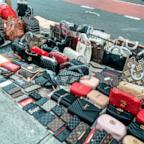Mellody Hobson: Savvy Shopping Secrets
Oct. 31, 2006 — -- There are tens of thousands of grocery stores and big-box retail outlets in this country (34,052 supermarkets at last count), but there are shared secrets among them all as it relates to getting shoppers to fill their carts.
Last year chain supermarkets generated sales of almost $500 billion. The largest, Wal-Mart, with 2,089 stores, had sales roughly under $100 billion.
What should you be on the lookout for next time you go shopping and what are the stores doing to get you to buy more?
Stores Strategically Place Items on Shelves
The average 5-year-old is about 3 feet, 6 inches tall. Retailers know this, and packaged-goods companies know this. Therefore, the items intended for child consumption are placed accordingly. For example, cereal, a child favorite, is strategically placed lower on store shelves or at cart level -- within reach of a child riding in a shopping cart. Additionally, the colors on the box (bright and almost always primary) as well as the eyes of the characters (purposely looking down) are intended to encourage young children to ask their parents to purchase the item.
Besides shelf placement, retailers are masterful at placing items strategically throughout their stores. Kohl's Department Store was the first big-box retailer to introduce the race-track setup for shopping. In essence, a shopper has to walk around the entire store to make a purchase and is forced to view almost everything before making it to the register.
The general concept behind this setup is the idea that the longer you are in the store and the more items and categories you view, the greater the likelihood you will buy more. Supermarkets are great at this as well. It is virtually impossible to walk into a supermarket and pick up a few common items by just going down one aisle. The maze is purposeful.
Stores also maximize the aisle ends with promotional items -- goods people normally do not have on their original shopping list --






